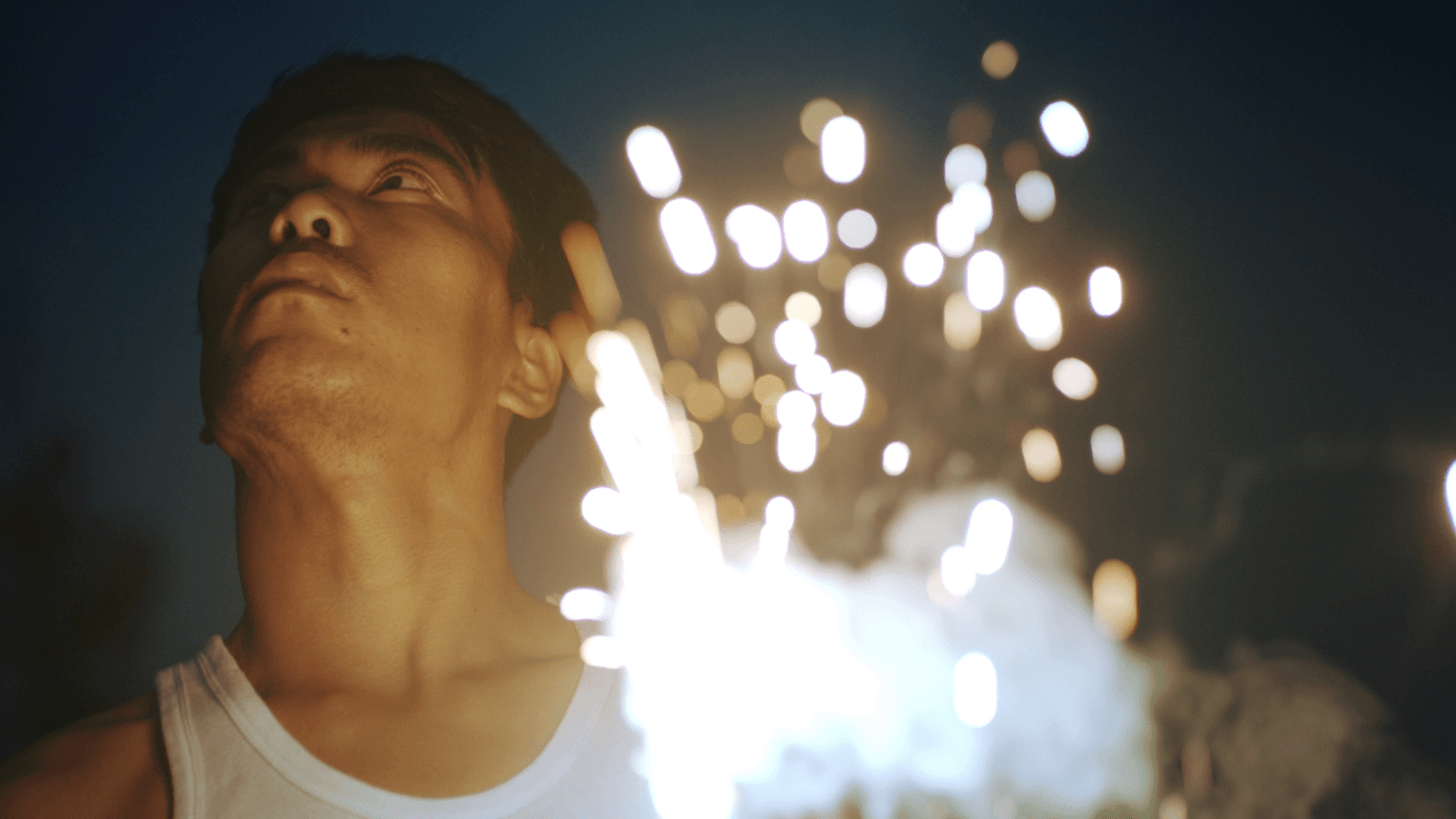Smoke and Fire煙火
In Smoke and Fire, Wang Tuo portrays the image of a migrant worker who exists simultaneously in both worlds of a two-part intertwined reality. In one world, this migrant worker is in a warehouse of movie props with an extremely vague sense of time and space. By reading tales of the miraculous and the legendary, he is projecting himself into multiple texts, “practicing” it again and again in reality or in his imagination. In the other world, the artist is conducting a sample observation of this migrant worker in a small town in Northeast China—recording his daily life, his emotions, and his journey back home. The documentation has slowly turned into a dramatic “rehearsal” of a recent violent incident in China that has been widely discussed. In this narrative on revenge, healing the deep-seated wound seems to have become a ritual that needs to wait. Through these embodied corporeal “counterattacks”, the artist implies a rupture between social and internal identities, as well as the latent contradiction between the individual trauma and the monstrous yet powerless reality.
王拓在《煙火》中讓我們看到一個同時存在於兩重交錯現實中的農民工形象。一邊,這位農民工正在一個時空感異常模糊的電影道具倉庫中,通過閱讀志怪與傳奇,將自我投射進一個個文本中,並在現實亦或是他的幻想中進行著一次次的“演練”;另一邊,藝術家對這位在東北某小城的打工者進行了樣本式的觀察,記錄下他的日常、情感與返鄉之路。真實的記錄慢慢變成了對一起中國近期發生並被廣泛討論的社會暴力事件的戲劇化“重新排演”。在這個有關復仇的敘述中,療愈長久沉積的創傷彷彿變成了一場需要等待的儀式。藝術家通過這場身體式的“反撲”,暗示出一種社會性身份與內在身份之間的撕裂,以及個體病症與龐然現實之間的潛在矛盾。
about the artist /
Wang Tuo (b. 1984, Changchun, China) interweaves Chinese modern history, cultural archives, fiction and mythology into speculative narratives. Equating his practice to novel writing, he stages an intervention in historical literary texts and cultural archives to formulate stories that blur the boundaries of time and space, facts and imagination. His work spans across film, performative elements, painting and drawing. The multidimensional chronologies he constructs, interspersed with conspicuous and hidden clues, expose the underlying historical and cultural forces at work within society. Embracing a uniquely Chinese hauntology, Wang proposes “pan-shamanization” as an entry point to unravel the suppressed and untreated memories of 20th century China. Through historical inquiry, Wang’s works, often unsettling and dramatic, disentangle collective unconsciousness and historical traumas. His more recent work critiques contemporary conditions of censorship, more specifically the tensions within the push and pull between artist and authority.
Wang has recent solo shows at UCCA, Beijing; Present Company, New York; Salt Project, Beijing; Taikang Space, Beijing, and recent group shows at National Museum of Modern and Contemporary Art, Seoul; Julia Stoschek Collection, Düsseldorf; Staatliche Kunsthalle Baden-Baden, Baden- Baden; Queens Museum, New York; Zarya Center for Contemporary Art, Vladivostok; 13th Shanghai Biennale, Shanghai; OCAT, Shenzhen & Shanghai; How Art Museum, Shanghai; Times Museum, Guangzhou; National Taiwan Museum of Fine Arts, Taichung.
Wang Tuo was an Artist in Residence at the Queens Museum, New York from 2015 to 2017. He won the China Top Shorts Award and the Outstanding Art Exploration Award for Chinese Short Films in Beijing International Short Film Festival 2018. Wang Tuo is the winner of the Three Shadows Photography Award 2018 and the Youth Contemporary Art Wuzhen Award 2019. He was awarded a research residency at KADIST San Francisco 2020.
vmac archived / artworks from the artist
All copyright reserved by the artist. 作品版權歸藝術家所有。
For enquires, please contact [email protected]
